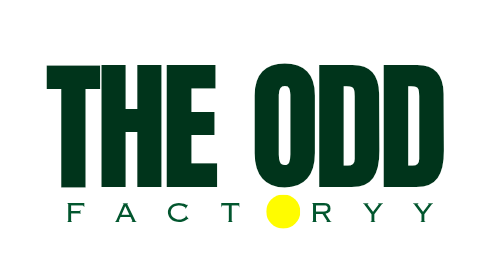What is Pattern Making?
Pattern making is a critical and foundational process in the garment manufacturing industry. It involves the creation of templates from which clothing pieces are cut and assembled. Pattern making for dress and other clothing items is not just about creating a design but transforming an idea into the blueprint for a wearable piece. At The ODD Factory, our skilled clothing pattern makers excel in translating fashion concepts into precise patterns that ensure the best fit and style.

 What Are The Methods Of Pattern Making?
What Are The Methods Of Pattern Making?

There are several methods of pattern making, each suited to different types of garments and design preferences:
- Drafting: This involves creating a pattern from scratch using measurements. It is precise and commonly used for tailored items.
- Draping: Fabric is pinned and adjusted on a dress form to develop a pattern. This method is ideal for complex designs and allows for creative exploration.
- Flat Pattern Method: Starting with a basic pattern (or “block”), adjustments are made to create new styles. This is an efficient method for clothing pattern makers to produce variations of a garment.
- Computer-Aided Design (CAD): Digital pattern making has become increasingly popular, using software to create and adjust patterns. This method allows for quick revisions and accurate scaling.
- Modular Design: Breaking down a garment into smaller parts or modules, which are then designed individually.
Our Success
10+
Countries Delivered
50+
Fashion Creators Empowered
12+
Industry Experience
 Tools and Materials Required for Pattern Making
Tools and Materials Required for Pattern Making

Several essential tools and materials are used in pattern making to ensure precision and efficiency:
- Measuring Tape: For taking accurate body measurements.
- Pattern Paper: To draw and cut out patterns.
- Dress Form: A mannequin used to drape fabric and see how a pattern will look.
- Scissors and Cutting Tools: For cutting pattern paper and fabric.
- Rulers and Curves: Including straight rulers, French curves, and hip curves for drawing lines and curves.
- Pencils and Markers: For marking measurements and adjustments on the pattern.
- Sewing Pins: To secure fabric to patterns or dress forms.
- Tracing Wheel and Carbon Paper: For transferring patterns onto fabric.
- CAD Software: For digital pattern making, such as clothing pattern maker software.
 How To Measure Your Size For Clothing
How To Measure Your Size For Clothing

Accurate measurements are the foundation of good pattern making. Here’s how to measure your size:
- Bust: Measure around the fullest part of your chest.
- Waist: Measure around the narrowest part of your waist.
- Hips: Measure around the widest part of your hips.
- Lengths and Heights: Such as shoulder to waist, waist to hem, and arm length.
- Neck: Measure around the base of your neck.
- Sleeve Length: Measure from the shoulder edge to the wrist.
- Inseam: Measure from the inner thigh to the ankle.
Ensure that the tape measure is snug but not tight, and always measure over the garments you plan to wear underneath the final piece.
 What Are the Benefits of Pattern Making?
What Are the Benefits of Pattern Making?

Pattern making allows for customization and personalization of garments, ensuring a perfect fit. It reduces fabric wastage and increases efficiency in production. With pattern making services, designers and manufacturers can experiment with designs before the final production, minimizing errors and enhancing the quality of the end product.
The benefits of pattern making are significant in the production of high-quality garments:
- Precision and Fit: Ensures garments fit consistently across different sizes.
- Efficiency: Speeds up the manufacturing process by providing clear instructions to the production team.
- Customization: Allows for custom designs that cater to individual preferences and body shapes.
- Consistency: Ensures that every garment produced is uniform in size and shape.
- Cost-Effective: Reduces waste by ensuring the accurate amount of fabric is used for each garment.
- Creativity: Provides a foundation on which designers can explore new designs and modifications.
 What is a working pattern?
What is a working pattern?

Pattern making allows for customization and personalization of garments, ensuring a perfect fit. It reduces fabric wastage and increases efficiency in production. With pattern making services, designers and manufacturers can experiment with designs before the final production, minimizing errors and enhancing the quality of the end product.
The benefits of pattern making are significant in the production of high-quality garments:
- Precision and Fit: Ensures garments fit consistently across different sizes.
- Efficiency: Speeds up the manufacturing process by providing clear instructions to the production team.
- Customization: Allows for custom designs that cater to individual preferences and body shapes.
- Consistency: Ensures that every garment produced is uniform in size and shape.
- Cost-Effective: Reduces waste by ensuring the accurate amount of fabric is used for each garment.
- Creativity: Provides a foundation on which designers can explore new designs and modifications.
 Types of Patterns
Types of Patterns

There are several types of patterns used in the garment industry:
- Block patterns: Basic patterns from which variations are derived.
- Sloper patterns: Custom-fitted basic patterns without any design or style allowances.
- Fashion patterns: Final patterns that include style and design elements.
- Fitting Pattern: Used to create the working pattern.
- Graded Pattern: A pattern resized to different body measurements.
- Style Pattern: Adjusted from a basic pattern to add design features.
 Applications of Pattern Making
Applications of Pattern Making

Pattern making is essential in various areas of the fashion and clothing industry:
- Fashion Design: Creating unique and appealing garments.
- Costume Design: For theater, film, and television.
- Tailoring: For custom, made-to-measure garments.
- Mass Production: For creating consistent, well-fitting garments in large quantities.
- Sportswear: Creating functional and form-fitting athletic wear.
- Online Retail: Many stores now offer to buy dress patterns online for home sewers and hobbyists
 The Future of Pattern Making
The Future of Pattern Making

As technology advances, digital pattern making is becoming more prevalent. This shift not only speeds up the production process but also enhances precision and allows for easy adjustments and customization. At The ODD Factory, we’re always at the forefront of adopting these innovations to provide superior pattern making services.
The future of pattern making is evolving with technology and changing fashion trends:
- Digital Pattern Making: More use of CAD software to improve accuracy and speed.
- Sustainable Design: Creating patterns that minimize waste.
- 3D Printing: Experimenting with direct-to-fabrication of garments.
- Customization: Increased demand for bespoke and made-to-measure garments.
- Collaborative Design: Using online platforms to share and develop patterns
globally.
 Common Challenges and Solutions
Common Challenges and Solutions

Pattern making can present challenges, but there are solutions to overcome them:
- Complex Fits: Use draping and 3D modeling to better understand fit.
- Inconsistent Sizing: Implement standardized measurement systems.
- Material Wastage: Optimize pattern layout using software.
- Skill Gap: Offer training and workshops to develop pattern-making skills.
- Time Constraints: Use digital tools to speed up the pattern-making process.
By understanding and leveraging the benefits of pattern making, designers and pattern making services can create high-quality, well-fitting garments. Whether you’re looking to buy dress patterns online or explore pattern making for dress, mastering these techniques and tools is essential for success in the fashion industry.
To explore more or buy dress patterns online, visit our comprehensive collection at The ODD Factory, where innovation meets precision in the art of pattern making.


